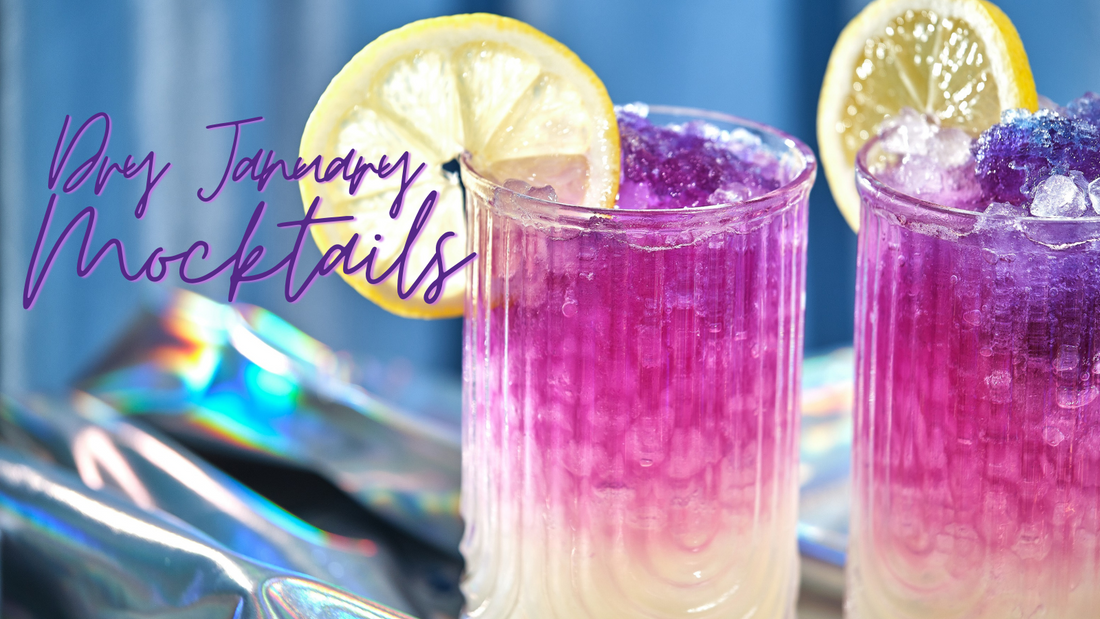In today's health-conscious and inclusive culture, the demand for mocktails has soared. Mocktails, or non-alcoholic cocktails, offer a delightful alternative to traditional alcoholic beverages, catering to individuals who prefer not to drink alcohol or are simply looking for a refreshing and sophisticated drink option. This month, we'll explore the art of crafting mocktails, from understanding flavor profiles to mastering mixology techniques.
Understanding Mocktails:
Mocktails are more than just the absence of alcohol; they are a celebration of flavors, creativity, and innovation. Unlike traditional cocktails, which often rely heavily on spirits for depth and complexity, mocktails leverage a diverse array of ingredients such as fresh fruits, herbs, spices, syrups, and bitters to create delicious and satisfying beverages. The key to crafting exceptional mocktails lies in balancing flavors, textures, and presentation to deliver a sensory experience that rivals its alcoholic counterparts.
Exploring Flavor Profiles:
Before diving into mocktail recipes, it's essential to understand the fundamental building blocks of flavor. Every ingredient contributes unique characteristics, including sweetness, acidity, bitterness, and aroma, which can be combined in endless variations to create distinctive flavor profiles. Experimenting with different ingredients and flavor combinations is the cornerstone of mocktail mixology, allowing you to unleash your creativity and develop signature drinks that reflect your personal style and taste preferences.
Essential Mocktail Ingredients:
Stocking your pantry with essential mocktail ingredients is the first step towards becoming a proficient mocktail mixologist. Here are some must-have ingredients to kickstart your mocktail journey:
- Fresh fruits: Citrus fruits like lemons, limes, and oranges add brightness and acidity to mocktails, while berries and tropical fruits offer sweetness and complexity.
- Herbs and spices: Fresh herbs like mint, basil, and rosemary impart aromatic notes, while spices such as cinnamon, ginger, and cloves add depth and warmth to mocktail recipes.
- Syrups and Juices: Simple syrups, flavored syrups, and fruit juices serve as the foundation for many mocktail recipes, providing sweetness and flavor.
- Bitters and extracts: Bitters and extracts enhance the complexity of mocktails, adding depth, aroma, and complexity to the final drink.
- Soda water and tonic water: Carbonated water adds effervescence and fizz to mocktails, while tonic water contributes bitterness and depth to certain recipes.
Mastering Mixology Techniques:
Creating exceptional mocktails requires more than just assembling ingredients; it involves mastering mixology techniques to achieve the perfect balance of flavors and textures. Here are some essential mixology techniques to elevate your mocktail game:
- Muddling: Muddling involves gently crushing fresh fruits, herbs, or spices to release their essential oils and flavors. Use a muddler or the back of a spoon to muddle ingredients in the bottom of a cocktail shaker or glass before adding other ingredients.
- Shaking: Shaking mocktails with ice helps chill the drink while simultaneously diluting and aerating the ingredients, resulting in a smooth and well-integrated beverage. Use a cocktail shaker filled with ice to shake mocktails vigorously for 10-15 seconds before straining into a glass.
- Stirring: Stirring is preferred for mocktails that contain delicate ingredients or require minimal dilution. Use a long-handled bar spoon to gently stir ingredients in a mixing glass filled with ice until well-chilled and properly diluted.
- Layering: Layering involves carefully pouring ingredients with different densities into a glass to create visually striking and flavorful mocktails. Start with the heaviest ingredient at the bottom and slowly pour lighter ingredients over the back of a spoon to create distinct layers.
- Garnishing: Garnishes add the finishing touch to mocktails, enhancing their appearance and aroma. Experiment with various garnishes such as citrus twists, fresh herbs, edible flowers, and fruit slices to complement the flavor profile of your mocktails.
In conclusion, whether you're participating in dry January or just looking to hit the reset button after the holidays, there's no reason for your taste buds to suffer. In fact, this is an excellent opportunity to explore a variety of exciting and flavorful non-alcoholic beverages. To help you stay on track and enjoy every moment of this journey, here are some delectable recipes that are sure to keep you satisfied throughout the month.
Candied Ginger Lemon Drop Mocktail


